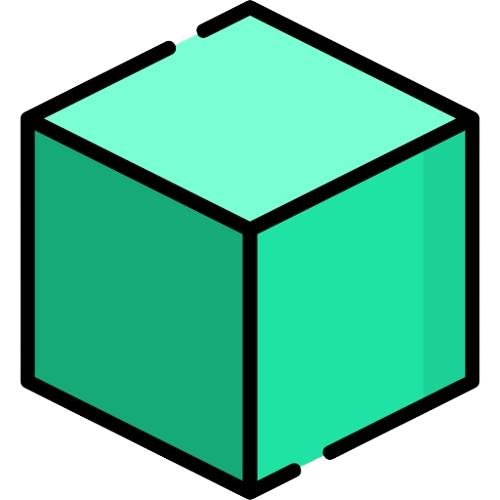Am I an AI Hoarder?
What Every Mission-Driven Leader Needs to Build Systems Instead of Stacking Apps
Let’s stay connected—find me on LinkedIn and Medium to further the conversation.
If you walk into my garage, you’ll find a few unopened boxes of tools I bought “just in case.” For some reason, I own two drills, one cordless, one that looked like a good deal. I’ve got gadgets still in their packaging, tools I’ve only used once or twice. Not because I’m careless, but because I want to be prepared. I like the idea of being ready to fix or build something when the moment comes. I actually enjoy DIY projects, and usually finish them!
But here’s what I’ve learned: A garage full of tools doesn’t mean you’re building anything.
That same pattern is showing up in how leaders I talk to approach AI.
We’re downloading tools, apps for writing, automating, planning, analyzing, hoping one of them will unlock a breakthrough. But without strategy, we’re not leading with AI. We’re hoarding it.
Here’s how I define the difference:
An AI hoarder collects tools without a plan, stacks apps based on trends or pressure, and confuses tech adoption with innovation. They react to urgency instead of designing with clarity.
An AI leader curates tools based on mission-aligned strategy, builds systems with intention, and integrates AI as a collaborator, not a savior, for their team and goals.
This article is here to help you spot the difference in your own work.
First, we’ll walk through how to identify AI hoarding and why it happens, even to smart, faith-filled leaders. Then we’ll move into a clear framework for building strategic, purpose-driven AI systems.
To guide us through that second part we have Jeremy Camilloni, creator of whatisthat.ai, to co-author Section 2. His insights into AI decision-making for real teams are sharp, simple, and field-tested. If you are not familiar with his work, just click above!
If you’ve been feeling stuck, this is how you get unstuck.
The AI Hoarder Problem
What AI Hoarding Actually Looks Like
AI hoarding isn’t always obvious. It often shows up in the habits we normalize:
Constantly signing up for new tools without a vetting process
Having multiple tools that do the same thing, but no one knows which to use
Asking teams to “experiment” without ever integrating or retiring anything
Confusing tool collection with actual transformation
In many organizations, AI hoarding looks like good intentions gone unfiltered.
You’ve got six apps “helping” with writing or analysis, but no clear workflow. Your team has five different automations, but still manually updates spreadsheets. Meetings start with tool talk instead of mission alignment.
There’s noise, not movement. It WILL get you stuck.
Why Smart, Faithful Leaders Fall Into the Trap
If you’re hoarding, it’s not because you lack wisdom. You likely care deeply about stewardship, innovation, and impact. You’re trying to lead well in a rapidly changing environment.
That’s why it happens.
We want to be prepared. Like the garage metaphor, we’d rather have too many options than risk being under-equipped.
We confuse exploration with progress. Trying a tool feels productive, but without structure, it’s just busyness.
We fear falling behind. Watching peers adopt tools can create low-grade panic. What am I missing?
We haven’t built integration muscles. Many leaders were never trained to design digital systems. So we default to trying more, not rethinking our approach.
The trap is this: activity mimics advancement. But movement without strategy eventually burns out even the most mission-driven leader.
The Hidden Costs of Hoarding
When hoarding becomes normal, here’s what gets lost:
Trust - Teams grow skeptical. Another tool? Another login? It starts to feel like a fad, not a vision.
Focus - Instead of deep work, people get stuck toggling between apps. The mental tax is real.
Time - Every new tool brings onboarding, bugs, and context-switching. What was supposed to save time now costs it.
Alignment - Tools shape behavior. If your tools aren’t shaped by your mission, your mission slowly bends to the tool.
And underneath it all is a spiritual erosion we rarely name: a subtle shift from faithful leadership to frantic management.
The wise leader stops the cycle. They listen. Reflect. Ask better questions. Then build forward- with discipline, not distraction.
That’s what the next section is all about. You’ve seen what hoarding looks like. Now it’s time to step into what leadership with AI can become, where Jeremy Camilloni lays out a practical framework to help you go from reactive collection to proactive integration. It’s how you build an AI strategy that aligns with your calling and lasts.
The AI Leader Framework
Let’s be honest: most teams aren’t drowning in AI.
They’re drowning in half-configured dashboards, dusty automations no one remembers setting up, and shiny apps that got one enthusiastic Slack message before being quietly forgotten.
It’s not your fault. It’s how most people approach AI right now — like Black Friday shoppers loose in a server room.
But there’s a better way. And no, it doesn’t involve a Notion board called “AI Strategy” that you never open again.
This is about becoming a builder, not a collector.
Let’s walk through a simple framework to help you go from reactive dabbling to aligned execution.
The AI Leader Framework
Three Phases: Audit → Align → Activate
1. Audit: Get brutally honest
Start by naming the mess. Print your tools list if you have to. Audit every app, script, and AI-powered thing you’ve signed up for — yes, even the ones you “just wanted to test.”
Ask:
What is this tool supposed to do?
Is anyone actually using it?
Does it connect to a larger system or strategy?
Is it saving time, or just adding clicks?
If the answer is “uhh” more than once, that’s a red flag.
This isn’t about shaming your past self. It’s about clearing the digital cobwebs so you can build with intention.
2. Align: Strategy before software
Now shift from inventory to identity. What’s your mission? What’s your operating model? What matters most in the next 12–18 months?
Then — and only then — ask:
Where could AI actually remove friction?
Where do we need augmentation vs. automation?
What workflows need to be rebuilt, not just duct-taped?
You’re not looking for cool tools. You’re designing leverage around what already works — and ruthlessly pruning what doesn’t.
3. Activate: Build one system at a time
Once you know where AI fits, you pick one high-leverage use case — and you go deep.
Not ten tools.
Not a 97-step automation you saw in a webinar.
Just one clear win, integrated end-to-end.
It might be:
Automating your client onboarding process
Summarizing customer support tickets with context
Using AI to draft first-pass marketing copy that matches your voice
Whatever it is, treat it like a real build. Assign an owner. Document it. Track time saved. Learn from it.
Because momentum doesn’t come from motion, it comes from finishing.
From Hoarder to Leader: Your 30-Day Implementation Plan
Let’s keep it simple. Here's what you do over the next month:
Week 1: Purge and Prioritize
Audit your tools. Cut what’s unused or duplicative.
Write down your top 3 organizational bottlenecks.
Pick 1 area where AI could reduce friction.
Week 2: Map the Workflow
Define the exact process you want to improve.
Write it out, step by step. Where does AI slot in?
Choose 1 tool to test, max.
Week 3: Build and Ship
Set up the system, even if it’s janky at first.
Get feedback from the person using it most.
Improve until it saves real time or brainpower.
Week 4: Document and Decide
Write down what you built and how it works.
Decide: Is this a permanent system or just an experiment?
If it works — scale it. If not — kill it.
Repeat next month. That’s it. No 5-year roadmap. No digital transformation fairy dust. Just consistent, strategic progress.
Remember
AI won’t lead for you. But it can help you lead better if you use it with intention.
A cluttered toolstack is a symptom, not a strategy.
Strategy before software, always.
Start small, build one real system. Learn. Repeat.
Subscribe to stay sharp and purposeful with AI
Follow Jeremy at whatisthat.ai
Follow Joel at Leadership in Change








Loved being apart of this! Thanks again!
The closer we get to the truth, the simpler it gets. The same goes for the tools and systems we use.